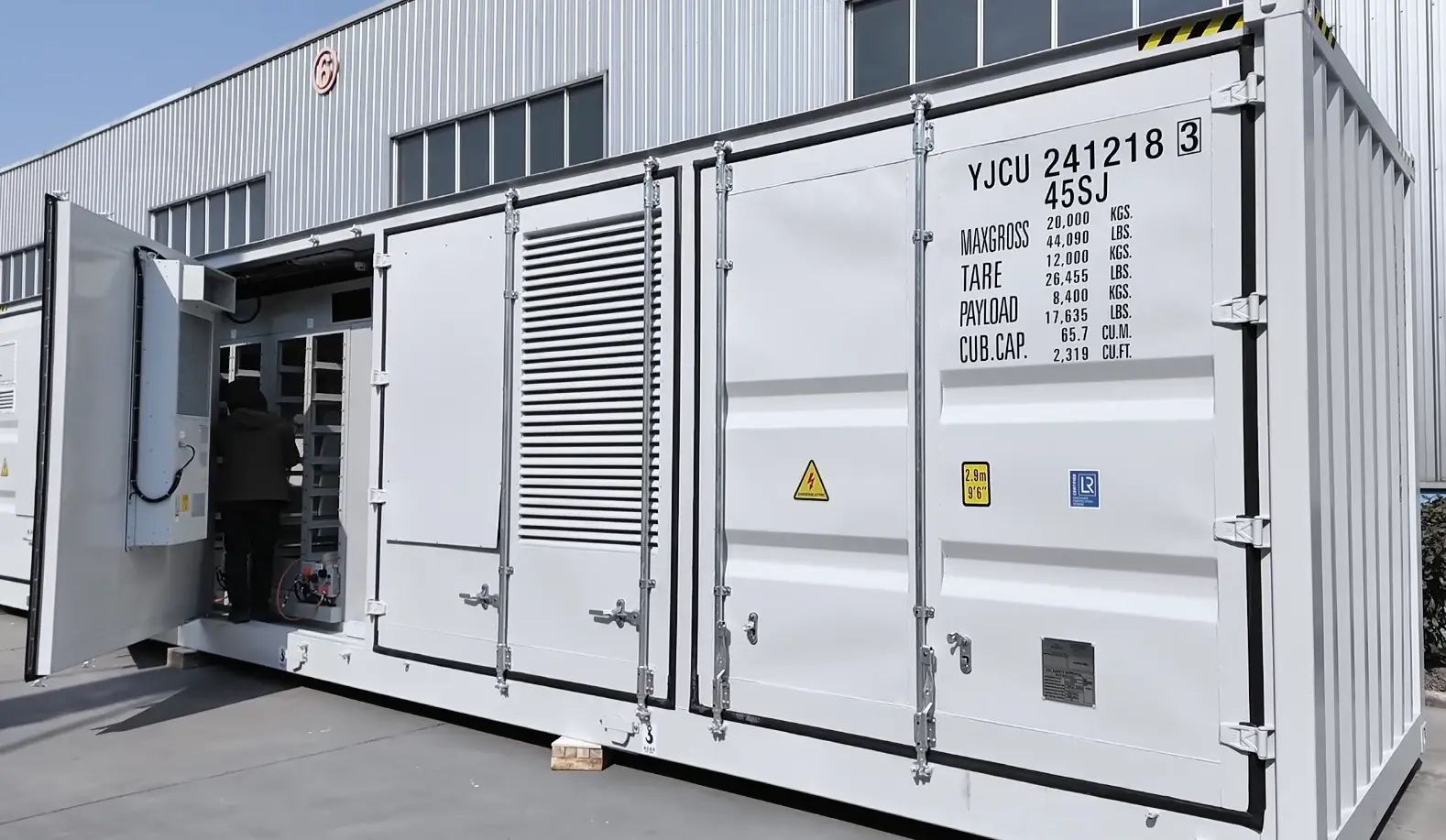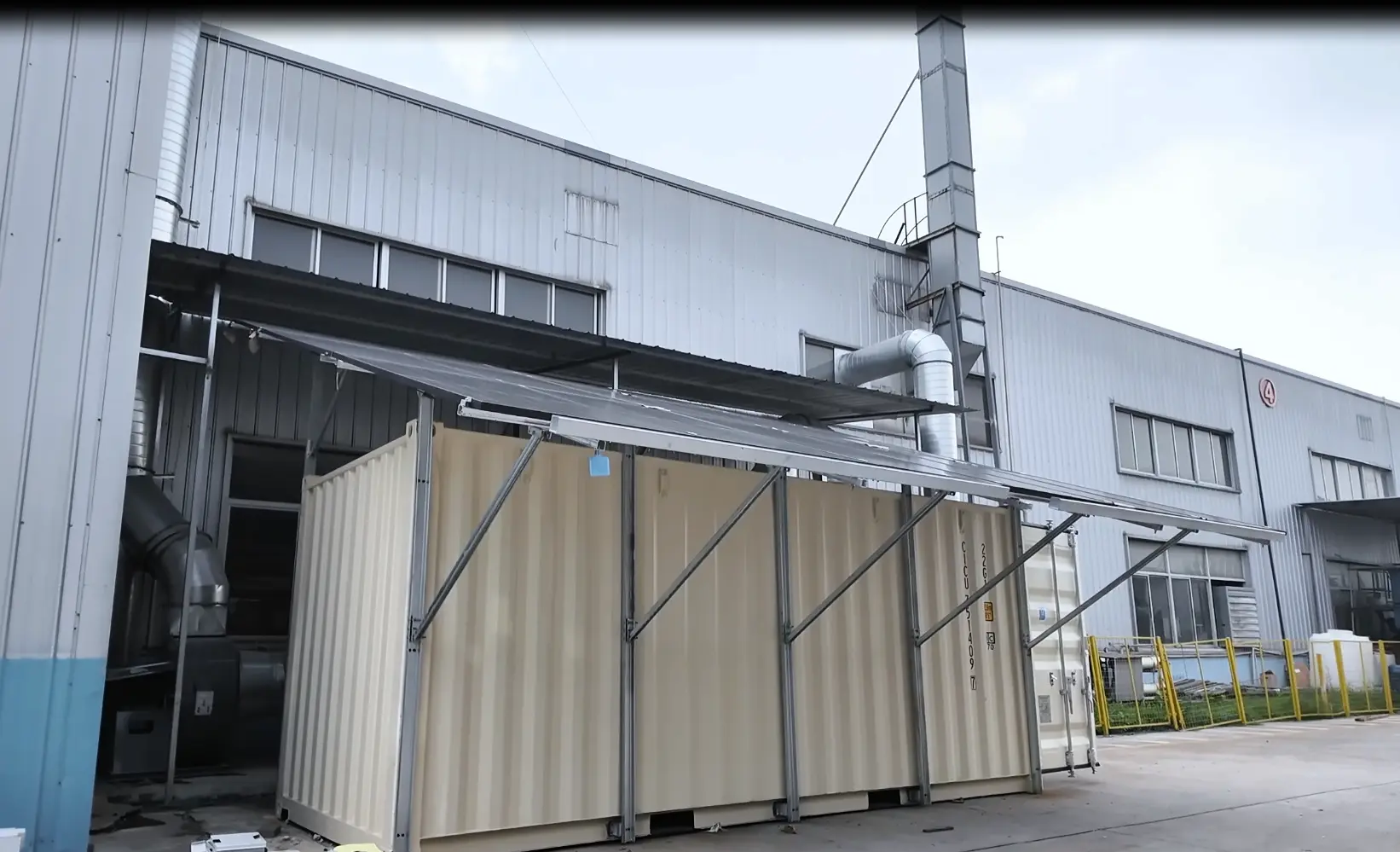2025-11-10
As renewable energy keeps expanding around the world, one question appears: how can we store solar power efficiently and safely? That’s where the solar battery container comes in — a flexible, modular, and high-performance solution that’s quietly transforming the future of energy storage.

A solar battery container is essentially a containerized solar battery system built inside a standard shipping container. It combines lithium-ion or sodium-ion batteries, inverters, battery management systems (BMS), and cooling modules — all pre-installed and tested in one ready-to-use package.
In simple terms, it’s a solar power storage container that can be shipped anywhere, connected to solar panels, and start delivering reliable green electricity within hours.
Typical units come in 20-foot or 40-foot containers, with energy capacities ranging from 100 kWh to several megawatt-hours (MWh) depending on the application.

Here’s how a solar container with battery storage operates:
1.Solar panels capture sunlight and generate DC electricity.
2.The energy flows into the solar energy battery container, where it’s stored for later use.
3.When the sun sets or demand spikes, the inverter converts stored energy into AC power to feed homes, factories, or the grid.
Some systems also feature smart monitoring software that tracks real-time performance, predicts energy needs, and optimizes charging and discharging cycles.
The containerized solar battery system offers multiple advantages that make it ideal for modern energy needs:
Unlike fixed installations, a solar battery box container can be transported and deployed almost anywhere — from remote villages and construction sites to mining areas or island resorts.
Need more capacity? Just add another container. The modular design makes it easy to expand power output as energy demand grows.
Because all major components are factory-integrated, setup is quick. Many manufacturers can deliver and commission a solar battery container in less than a week.
Advanced liquid cooling, fire suppression systems, and AI-driven monitoring make modern containers much safer and longer-lasting than earlier battery solutions.
By balancing solar generation and energy consumption, users can reduce peak demand and save on electricity bills — especially in regions with unstable or expensive power supply.
The solar battery container is reshaping how we power various sectors:
Remote Areas & Islands: A solar container with battery storage brings reliable electricity to regions beyond the grid.
Commercial & Industrial Users: Reduces peak load and serves as a clean backup during blackouts.
Utility Projects: Supports grid stabilization, frequency control, and renewable integration.
Emergency & Military Use: Quick-to-deploy, portable energy for disaster relief or field bases.
Construction & Mining Sites: Replaces diesel generators, cutting both costs and emissions.
In Africa and the Middle East, solar energy battery containers are already lighting up rural communities, providing power for clinics, schools, and small businesses — all without relying on fossil fuels.
The world is moving toward decentralized and intelligent energy networks. Instead of one big grid, we’ll have a web of smart, distributed nodes, each capable of producing and storing power.
The solar battery container fits perfectly into that model — compact, modular, and easy to integrate. It bridges the gap between renewable generation and real-world energy demand. As battery technology continues to evolve, new containerized solar battery systems will offer higher capacity, better safety, and longer lifespan.
Manufacturers like HJ Energy Storage are already developing next-generation systems featuring liquid cooling, LFP cells, and digital control platforms for smarter operation.
The solar power storage container is not just about convenience — it’s about sustainability.
Each deployed unit helps reduce:
Carbon emissions, by replacing diesel generators.
Noise pollution, as it runs silently.
Transportation risks, by removing the need for fuel delivery in remote areas.
At the same time, these containers empower local communities, giving them independent and clean energy access — a key step toward global electrification and carbon neutrality.
With global policies pushing for renewable energy and carbon reduction, the solar battery container is becoming a core component of future energy systems.
It’s modular, scalable, and can be quickly adapted to any environment. From industrial plants to rural villages, it provides stable, sustainable, and intelligent energy solutions.
In the near future, we might see a solar battery box container on every major project site, serving as a building block for the world’s clean energy infrastructure.

European 4MWh Energy Storage Project

Shanghai Huijue Solar Carport Project

Small Commercial Energy Storage System Project for Singapore Manufacturing Companies

China Hunan Province Scenic Area Microgrid System Project

Northern Europe Commercial Center Outdoor Cabinet Industrial and Commercial Energy Storage System Project